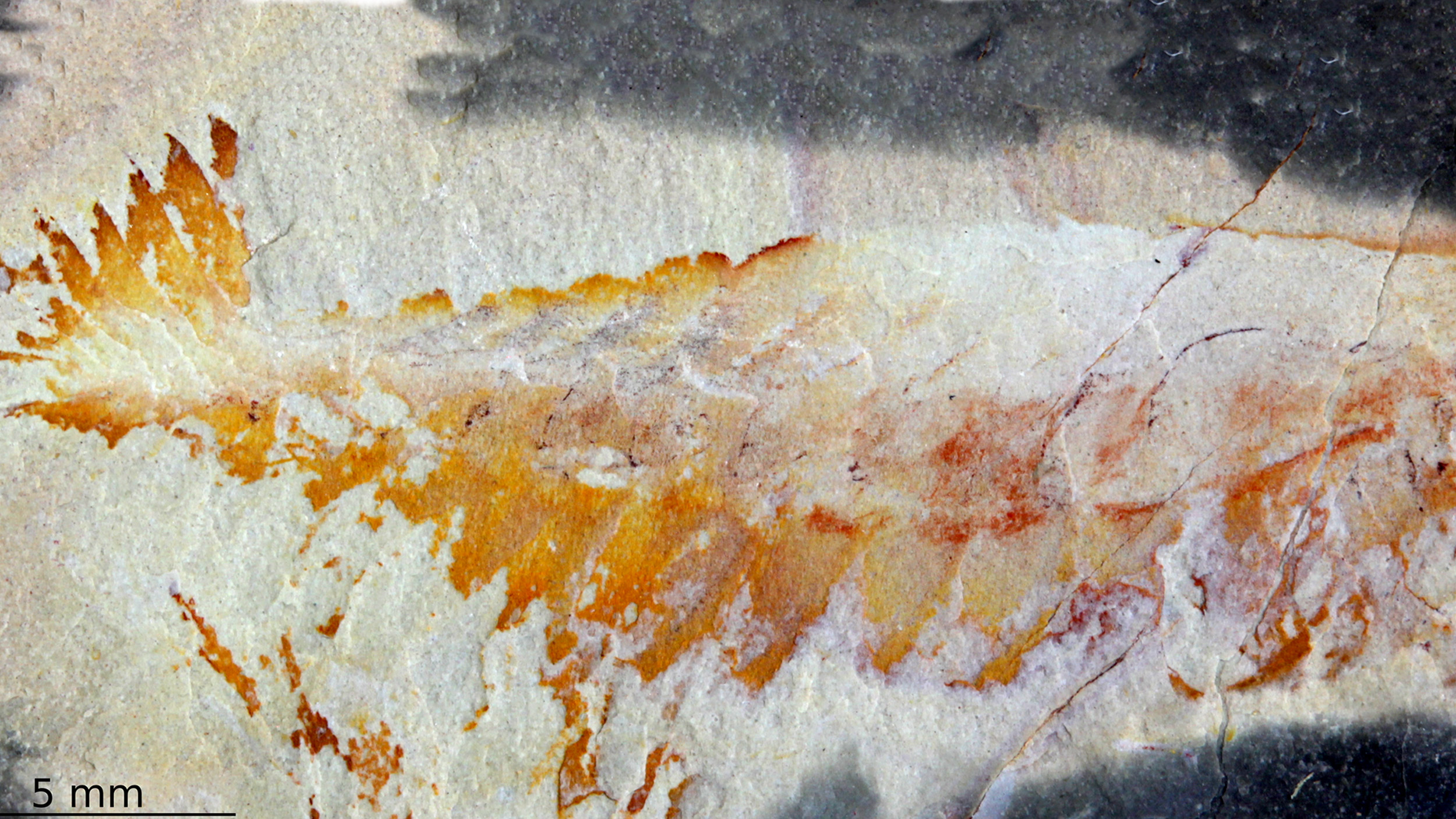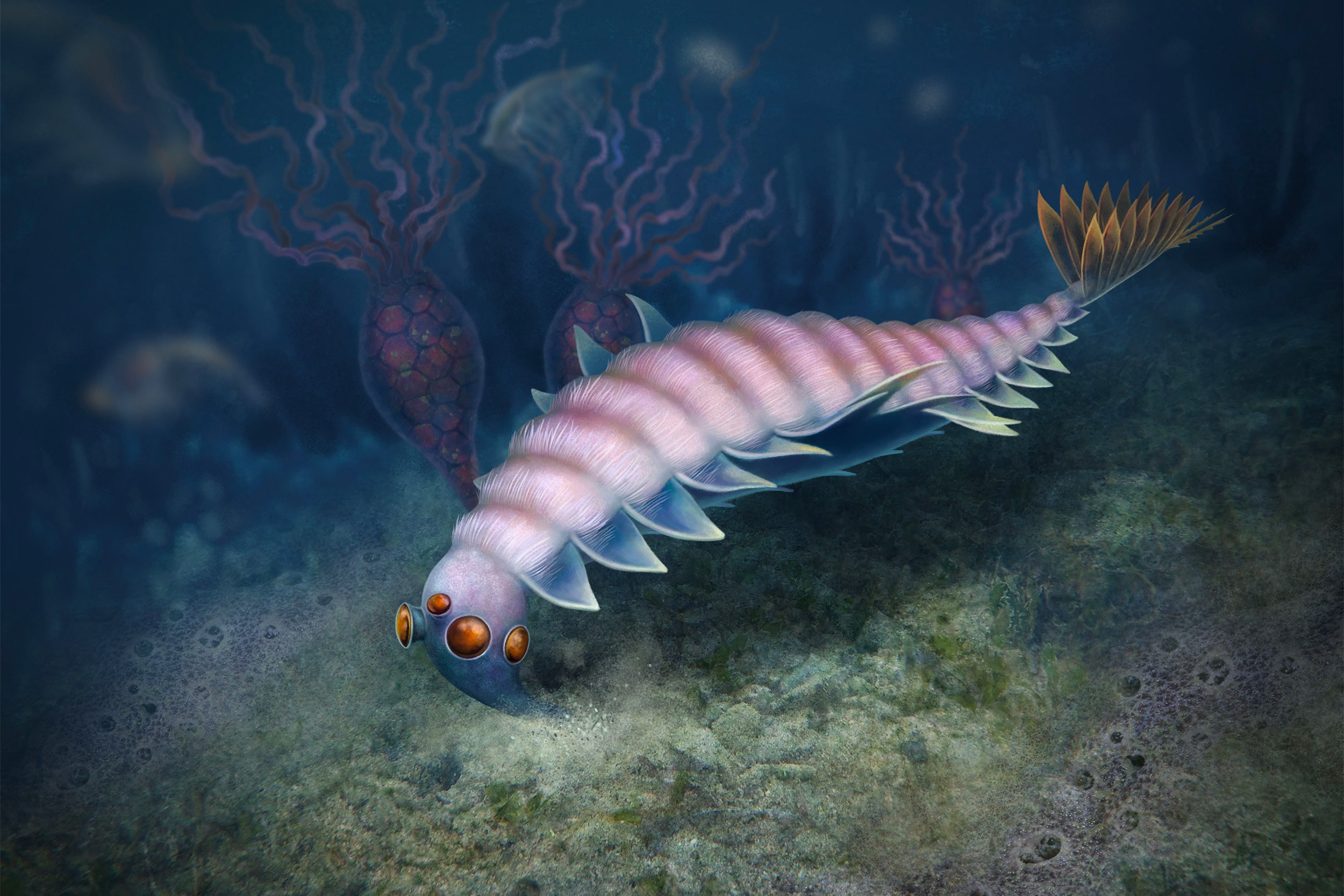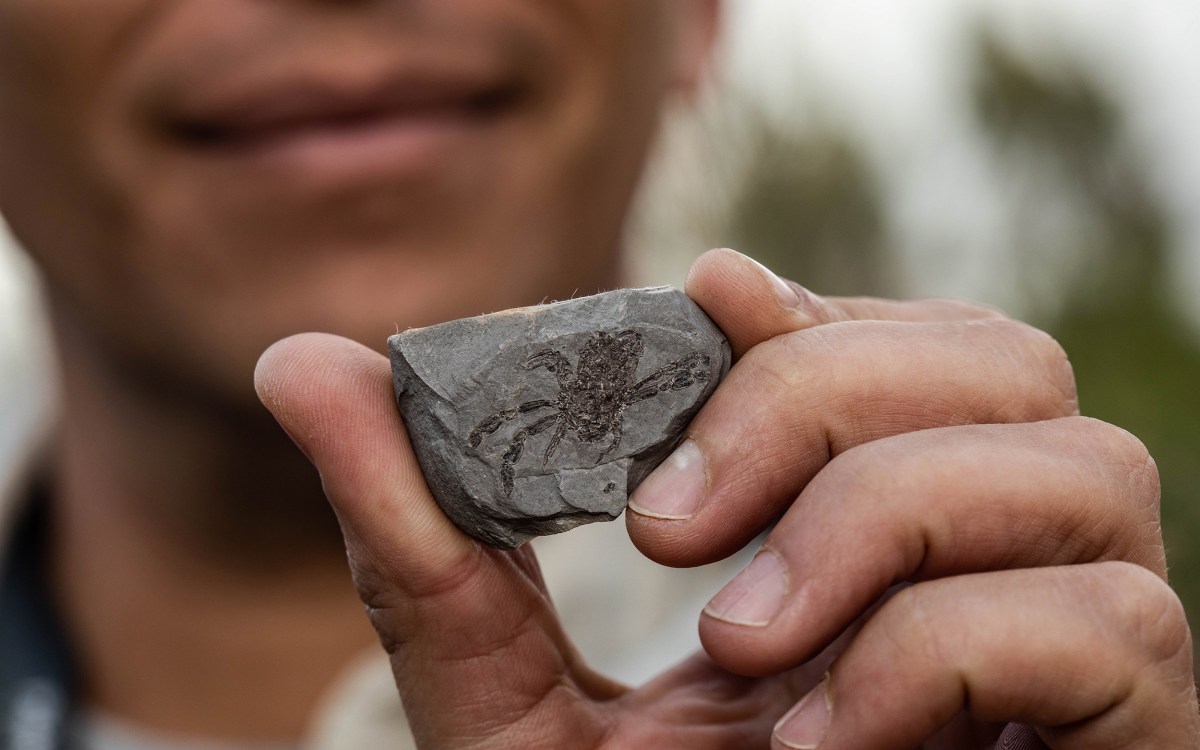With a tip of hat to Stephen Jay Gould

Scientists have identified a second opabiniid from a single fossil found in Utah. The new creature has since been renamed Utaurora comosa.
Photo by S. Pate
Team discovers only second ‘weird wonder’ fossilized Opabinia, popularized by legendary late evolutionary biologist
With his seminal 1989 book, “Wonderful Life,” Stephen Jay Gould, then a professor in the Department of Organismic and Evolutionary Biology, celebrated the “weird wonder” of Cambrian era stem-group arthropods, exciting young readers and aspiring paleontologists with his descriptions of creatures like the extinct Opabinia. First identified from 500 million-year-old fossil remains found in British Columbia’s Burgess Shale in 1912, the seemingly unique sea creature was distinguished by the five compound eyes that extended on stems above its trunk-like proboscis.
Now some evolutionary biologists, including an avowed Opabinia “fan girl,” have taken Gould’s work a step farther in research done in Javier Ortega-Hernández’s lab, identifying a second opabiniid from a single fossil found in Utah.
The discovery published earlier this month in the biology journal Proceedings of the Royal Society B began in 2016 when lead author Stephen Pates, then a Ph.D. student at the University of Oxford, went to Kansas to check out an unusual fossil. Pates’ doctoral thesis had involved re-examining radiodonts, another type of stem-group arthropod, and the University of Kansas Biodiversity Institute and Natural History Museum had what had been described as a radiodont in 2008.
At that time, scientists classified opabiniids and radiodonts into one monophyletic group called dinocarids. Since then, new species of radiodonts have been discovered, highlighting additional differences between the two stem groups (extinct groups that most closely resemble living animals) and clarifying our understanding.
This new knowledge made that Kansas fossil stand out. “I couldn’t quite make it fit into of our existing knowledge of radiodonts,” recalled Pates, formerly a postdoctoral fellow in the Department of Organismic and Evolutionary Biology and currently a Herchel Smith postdoctoral fellow at the University of Cambridge. For one, it lacked the distinctive claw-like appendages of radiodonts. And although no head was preserved — which might have showed those telltale five eyes or Opabinia’s distinctive proboscis — he noted a “mix of characteristics,” including body flaps, that put it closer to Opabinia. “Was it just a weird radiodont?” he asked. “The more we find, the weirder they get. Or was it something else? That was a viable hypothesis that we needed to test.”
Upon joining the Ortega-Hernández lab, Pates enlisted co-lead author and research fellow Joanna Wolfe to do a phyletic analysis, assessing the specimen’s evolutionary affinities to the existing Opabinia and to other radiodonts. “They [the Utah specimen and Opabinia] are each other’s closest relatives,” she explained. Although neither has the segmented body that characterizes contemporary arthropods, each of these “sister groups” has distinct features that show the beginning of this segmentation.

Artistic reconstruction of Utaurora comosa from the Wheeler Formation, Utah.
Artwork by F. Anthony
Applying a new phyletic analysis method known as treespace, the team compared 125 of the fossil’s traits with more than 50 groups of modern and extinct arthropods, which revealed the likelihood of phylogenetic trees — evolutionary relationships — rather than giving simple binary readings. “It was really nice to be able to visualize and explore these alternative hypotheses,” said Pates.
The results were definitive. The troublesome fossil had much more of a relationship with the one existing Opabinia than with anything else, and certainly more than with any radiodonts.
“I’m obsessed with Opabinia,” said Wolfe, who cites Gould as a major early influence. “Because I’m such a fan girl, I thought people were going to think that I was trying to make it be Opabinia,” she confessed. “So I went extra hard to prove that it wasn’t, but it was!”
The new creature has since been renamed Utaurora comosa: a mash-up of Utah and Aurora, the Roman goddess of the dawn, who turned her lover into a cicada, a modern arthropod, and “comosa,” or “hairy,” for the layered dorsal and tail fan.
Along with its evidence for reclassification, the paper — co-authored by Ortega-Hernández, associate professor and curator of invertebrate paleontology in the Museum of Comparative Zoology, research fellow Rudy Lerosey-Aubril, and the University of Lausanne’s Allison C. Daley — makes a compelling case for the utility of phylogenetic analysis. Because Utaurora is a few million years younger than the original Opabinia and hails from Utah as opposed to British Columbia, it appears that Gould’s wonderful Opabiniids existed for longer and over a wider range than previously thought.
As Utaurora takes its place in history as the first new Opabiniid in a century, it also may unlock other secrets of its family tree. “The implications are important because it changes our view of how the characters that define arthropods have evolved over time,” explained Wolfe.






